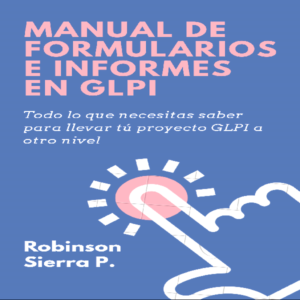As every one understands, our conflict with Mexico has been almost entirely eclipsed by the greater wars following it. But in the field of thought mere size does not count for much; and while the number of troops and the lists of casualties give the present subject little comparative importance, it has ample grounds for claiming attention. As a territorial stake New Mexico, Arizona and California were of immense value. National honor was involved, and not a few of the Mexicans thought their national existence imperilled. Some of the diplomatic questions were of the utmost difficulty and interest. The clash of North and South, American and Mexican, produced extraordinary lights and shades, and in both countries the politics that lay behind the military operations made a dramatic and continual by-play. The military conduct of the governments?especially our own?and the behavior of our troops on foreign soil afforded instruction worthy to be pondered. While vast concentrations of forces and complicated tactical operations on a great scale were out of the question, the handling of even small armies at a long distance from home and in a region that was not only foreign but strange, created problems of a peculiar interest and afforded lessons of a peculiar value, such as no earlier or later war of ours has provided; and the examples of courage, honor and heroism exhibited in a conflict not only against man but against nature merited correct appreciation and lasting remembrance.[1][A] The warrant for offering another work on the subject rests primarily on the extent and results of the author?s investigations. His intention was to obtain substantially all the valuable information regarding it that is in existence, and no effort was spared to reach his end. The appendix of volume II gives a detailed account of the sources. By special authorization from the Presidents of the United States and Mexico it was possible to examine every pertinent document belonging to the two governments. The search extended to the archives of Great Britain, France, Spain, Cuba, Colombia and Peru, those of the American and Mexican states, and those of Mexican cities. The principal libraries here, in Mexico and in Europe, the collections of our historical societies, and papers belonging to many individuals in this country and elsewhere were sifted. It may safely be estimated that the author examined personally more than 100,000 manuscripts bearing upon the subject, more than 1200 books and pamphlets, and also more than 200 periodicals, the most important of which were studied, issue by issue, for the entire period.[B] Almost exclusively the book is based upon first-hand sources, printed matter having been found of little use except for the original material it contains or for data regarding biography, geography, customs, industries and other ancillary subjects.[2] The author also talked or corresponded with as many of the veterans as he could reach, and he spent more than a year, all told, in Mexico, where he not only studied the chief battlefields but endeavored, through conversations with Mexicans of all grades and by the aid of foreigners long resident in the country, to become well acquainted with the character and psychology of the people. As the war was fought almost exclusively among them, and its inception, course and results depended in large part upon these factors, the author attaches not a little importance to his opportunities for such personal investigations and to his Mexican data in general.[2] Probably more than nine tenths of the material used in the preparation of this work is in fact new. No previous writer on the subject had been through the diplomatic and military archives of either belligerent nation, for example. Virtually a still larger percentage is new, for the published documents needed to be compared with the originals. In the printed American reports relating to the battles of September 8 and 13, 1847, for instance, over fifty departures from the manuscripts, that seemed worth noting, were found. Nor did the additional documents prove by any means to supply mere details. A great number of unprinted statements from subordinate officers, who were nearer to the facts than their superiors could be, were discovered. The major official reports needed both to be supplemented and to be corrected. Such reports were in most instances colored more or less, and in some radically distorted, for personal reasons or from a justifiable desire to produce an effect on the subordinates concerned, the army in general, the writer?s government, the enemy, and the public at home and abroad; while, as General Scott stated in orders, unintentional omissions and mistakes were ?common.? Taylor?s account of the battle of May 9, 1846, for example, failed completely to explain his victory. It has been only by obtaining and comparing a large number of statements that approximate verity has been reached. The same has been true of the diplomatic and political aspects of the subject. The reports of the British, French and Spanish ministers residing at Mexico, to cite one illustration, proved indispensable. In reality, therefore, aside from its broader outlines the field presented ample opportunities for study; and while no doubt so extended an investigation included many facts of slight value, La Rochefoucauld was right when he said, ?To know things perfectly, one should know them in detail.?[3] As a particular consequence of this full inquiry, an episode that has been regarded both in the United States and abroad as discreditable to us, appears now to wear quite a different complexion. Such a result, it may be presumed, will gratify patriotic Americans, but the author must candidly admit that he began with no purpose or even thought of reaching it. His view of the war at the outset of his special inquiries coincided substantially with that prevailing in New England, and the subject was taken up simply because he felt convinced that it had not been studied thoroughly. This conviction, indeed, has seemed to be gaining ground rapidly for some time, and hence it is believed that new opinions, resting upon facts, will be acceptable now in place of opinions resting largely upon traditional prejudices and misinformation. Some might suggest that only a military man could properly write this work. But, in the first place, the author did not wish to prepare a technical military account of the war. His aim was to offer a correct and complete view of it suitable for all interested in American history, and it will be found that politics, diplomacy and other phases of the subject required as full investigation as did its military aspects. Secondly, the author took pains to qualify himself for his task. The real difficulty of the commanding general consists in applying the principles of war under complicated, obscure and changeful conditions, and in overcoming ?friction? of many sorts. The intellectual side of the art is readily enough understood. ?In war everything is very simple,? wrote Clausewitz, the fountainhead of the modern system. ?The theory of the great speculative combinations of war is simple enough in itself,? said Jomini; ?it only requires intelligence and attentive reflection.? ?Strategy is the application of common sense to the conduct of war,? declared Von Moltke. Arnold in his Lectures on Modern History said: ?An unprofessional person may, without blame, speak or write on military subjects, and may judge of them sufficiently;? and the eminent military authority, G. F. R. Henderson, endorsed this view. ?The theory of war is simple,? wrote another expert, ?and there is no reason why any man who chooses to take the trouble to read and reflect carefully on one or two of the acknowledged best books thereon, should not attain to a fair knowledge thereof.? As may be seen from the list of printed sources, the present author?beginning with the volumes recommended by a board of officers to the graduates of the United States Military Academy?did much more than is here proposed. Finally, during the entire time occupied in writing this work he fortunately enjoyed the advantage of corresponding and occasionally conferring with Brigadier General Oliver L. Spaulding, Jr., of the United States Field Artillery, formerly instructor at the Army Service Schools, Fort Leavenworth, and more recently Assistant Commandant of the School of Fire, Fort Sill, who had distinguished himself not only in the service but as a writer on professional subjects. General Spaulding has kindly discussed with the author such military questions as have arisen, and has read critically all the battle chapters. No responsibility should, however, be attached to him, if a mistake is detected.[4] A word must be added with reference to the notes. These have been placed at the ends of the volumes because the author believes the best plan will be to read the text of each chapter before looking at the notes that bear upon it, and also in part because he did not wish any one to feel that he was parading his discussions and citations. The notes contain supplementary material designed to make the work a critical as well as a narrative history, and contain also specific references to the sources on which the text is based. These references involved a most annoying problem. When one?s citations are limited in number and proceed in single file, as it were, they can be handled easily. But in the present instance as many as 1800 documents were used for a chapter, not a few of which were cited more than once; and each sentence of the text?to speak broadly?resulted from comparing a number of sources. Under these conditions the usual method would have produced a repellent mass of references, perhaps greater in extent than the text itself, which would have been very expensive to print and from their multiplicity would have been extremely inconvenient. Where that method appeared feasible it was adopted, but as a rule the references have been grouped by paragraphs or topics. In many cases, however, pains have been taken to indicate in the text itself the basis of important statements, and further hints will be found in the notes. The reader can thus always ascertain in general the basis of the text, and will find specific references wherever the author has thought it likely they would be desired. The special student will wish to look up all the citations bearing on any topic that interests him. No doubt the plan is somewhat unsatisfactory, but after studying the subject for a dozen years the author feels sure that any other would have been more so.[5] To thank all who kindly assisted the author to obtain material is practically impossible; but a number of names appear in the list of MS. sources, and others must be mentioned here. Without the cordial support of Presidents Theodore Roosevelt and Porfirio Diaz, Secretary of State Elihu Root, Minister of Relations Ignacio Mariscal, and Senator Henry Cabot Lodge this history could not have been written; and the author acknowledges with no less pleasure his special obligations to Whitelaw Reid, American Ambassador to Great Britain, Joseph E. Willard, Ambassador to Spain; Henri Vignaux, First Secretary of our embassy at Paris; J. J. Limantour, Minister of Hacienda, Mexico; Major General J. Franklin Bell, Chief of Staff; Major General F. C. Ainsworth, Adj. Gen.; Admiral Alfred T. Mahan; Admiral French E. Chadwick; Brigadier General J. E. Kuhn, Head of the War College, Washington; Dr. J. Franklin Jameson, Director of the Department of Historical Research, Carnegie Institution; Dr. Gaillard Hunt, Chief of the Division of MSS., Library of Congress; Dr. St. George L. Sioussat, Brown University; Dr. Eugene C. Barker, University of Texas; Dr. Herbert E. Bolton, Professor Frederick J. Teggart and Dr. H. I. Priestley of the University of California; Dr. R. W. Kelsey of Haverford College; Dr. J. W. Jordan, Pennsylvania Historical Society; Dr. Worthington C. Ford, Editor for the Massachusetts Historical Society; Dr. Solon J. Buck of the Minnesota Historical Society; R. D. W. Connor, Secretary of the Historical Commission of North Carolina; Dr. R. P. Brooks of the University of Georgia; Dr. Dunbar Rowland, Director of the Archives and Historical Department of Mississippi; T. M. Owen, Director of the Historical Department of Alabama; Dr. George M. Philips, State Normal School, West Chester, Pa.; Waldo G. Leland, Secretary of the American Historical Association; W. B. Douglas and Miss Stella M. Drumm, Librarian, of the Missouri Historical Society; Dr. Clarence E. Alvord of the University of Illinois and Mrs. Alvord (formerly Miss Idress Head, Librarian of the Missouri Historical Society); Ignacio Molina, Head of the Cartography Section, Department of Fomento, Mexico; Charles W. Stewart, Librarian of the Navy Department; James W. Cheney, long the Librarian of the War Department; Major Gustave R. Lukesh, Director, and Henry E. Haferkorn, Librarian of the United States Engineer School, Washington Barracks; D. C. Brown, Librarian of the Indiana State Library; Victor H. Paltsits, Department of MSS., New York Public Library; W. L. Ostrander of the library at West Point; Lieutenant James R. Jacobs, 28th United States Infantry; Dr. Katherine J. Gallagher; Dr. Martha L. Edwards. To the widow of Admiral Charles S. Sperry and their son, Professor Charles S. Sperry, the author is particularly indebted for an opportunity to examine important papers left by William L. Marcy. Valuable suggestions were most kindly given by Dr. William A. Dunning of Columbia University and Dr. Davis R. Dewey of the Massachusetts Institute of Technology, who read portions of the text, by Francis W. Halsey, Esq., of New York, who read nearly all of it, and by Dr. Edward Channing of Harvard University, who was so good as to look over more or less closely all of the proofs. To the helpers not mentioned by name the author begs leave to offer thanks no less sincere. Finally, the author desires to mention the enterprise and public spirit shown by the publishers in bringing out so expensive a work at this time of uncertainty. The Century Club, New York September, 1919.
War with mexico, volume i (of 2)
Sobre
Talvez você seja redirecionado para outro site












